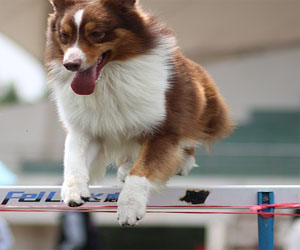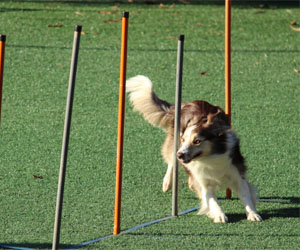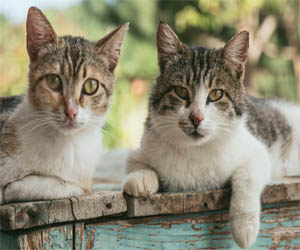


A Thrilling World Of Canine Competition And Camaraderie

Dog sporting events, also known as dog sports, have taken the world by storm, offering a captivating blend of competition, athleticism, and camaraderie among dogs and their owners. These events encompass a wide range of activities, from racing and agility to obedience trials and even specialized competitions like dock diving and flyball. In this article, we'll dive into the exciting universe of dog sporting events, exploring their significance, diversity, and the numerous benefits they offer to dogs and their dedicated owners.
One of the most popular dog sporting events is agility competitions. In these contests, dogs navigate a challenging obstacle course, showcasing their speed, agility, and their ability to respond to their handler's commands. The synergy between dogs and their owners is truly remarkable, as they work together to complete the course successfully. Agility events are as much a test of teamwork as they are a demonstration of a dog's individual skills.
Obedience trials, on the other hand, focus on a dog's ability to follow commands and display self-control. Dogs are judged based on their precision in executing commands like sitting, staying, heeling, and more. These competitions highlight not only the dog's obedience but also their intelligence and the dedication of their owners to training.
Racing events, including greyhound and sled dog racing, offer a thrilling showcase of speed and endurance. These events allow dogs to demonstrate their natural talent for racing, whether on a track or in the snowy wilderness. Racing events provide dogs with the opportunity to tap into their innate instincts and physical capabilities.
Specialized dog sporting events like dock diving and flyball add a unique dimension to the world of dog sports. Dock diving involves dogs leaping off a dock into a pool to retrieve a thrown object, demonstrating their strength, agility, and love for water. Flyball is a relay race where teams of dogs hurdle over obstacles to trigger a spring-loaded box, releasing a tennis ball, which they then retrieve. These events offer excitement and a refreshing change of pace.
Dog sporting events offer numerous benefits to both dogs and their owners. For dogs, these activities provide essential exercise and mental stimulation, contributing to their overall well-being. They also foster socialization, as dogs interact with other canines and their owners, helping them become more well-adjusted pets.
For dog owners, participating in sporting events is an opportunity to deepen their bond with their pets. The trust and teamwork required to excel in these events create a unique connection between the two, enhancing their companionship. It's a chance for owners to learn more about their dog's capabilities and build a stronger, more harmonious relationship.
Dog sporting events are more than just showcases of canine prowess; they are celebrations of the exceptional partnership between humans and their canine companions. Whether it's agility, obedience, racing, or specialized competitions, these events provide exercise, mental stimulation, and socialization for dogs while strengthening the bond between dog and owner. Dog sporting events are a thrilling world of competition, athleticism, and camaraderie that enriches the lives of dogs and the people who adore them.
A Sustainable Path Forward
 2. Composting Organic Waste
2. Composting Organic Waste
A significant portion of landfill waste consists of organic materials such as food scraps and yard trimmings. Composting these materials not only reduces the volume of waste going to landfills but also produces valuable compost that can enrich soil and support sustainable agriculture. Composting is a simple yet effective way to reduce the environmental impact of landfill waste.
3. Waste-To-Energy Technology
Waste-To-energy (WTE) technology, as discussed in previous articles, is a powerful strategy for diverting waste from landfills and generating clean energy simultaneously. By incinerating waste at high temperatures, WTE facilities can significantly reduce waste volume and produce electricity and heat, making it a win-win solution for waste management and sustainable energy production.
4. Circular Economy Initiatives
The concept of a circular economy emphasizes designing products with end-of-life considerations in mind. Instead of creating products that become waste, the goal is to create items that can be repaired, reused, or easily recycled. This approach minimizes the need for landfill disposal and encourages resource conservation.
5. Extended Producer Responsibility (EPR)
EPR is a policy approach that places responsibility on manufacturers for the entire life cycle of their products, including the post-consumer phase. It encourages companies to design products that are easier to recycle and manage at the end of their life, thus reducing the waste that ends up in landfills.
Unleashing Canine Athleticism And Bonding
 What Is Agility Training?
What Is Agility Training?
Agility training is a dog sport that involves navigating a timed obstacle course. These courses can vary in complexity but typically include jumps, tunnels, weave poles, A-frames, and seesaws. The dog's task is to complete the course as quickly as possible, following their handler's commands and without knocking down any obstacles. The sport is not just about speed; it also requires precision and teamwork between the dog and their owner.
Physical Exercise And Mental Stimulation: Agility courses provide dogs with an excellent physical workout. Running, jumping, climbing, and weaving through obstacles help maintain a dog's fitness and health. This is especially beneficial for high-energy breeds, as it allows them to expend their excess energy in a constructive way. In addition to physical exercise, agility training offers significant mental stimulation. Dogs must follow commands, make quick decisions, and memorize the course, which challenges their cognitive abilities.
Building A Strong Bond: One of the most remarkable aspects of agility training is the bond it creates between dogs and their owners. The sport requires clear communication, trust, and cooperation. Handlers use verbal commands and hand signals to guide their dogs through the course. This teamwork enhances the connection between the two, as they learn to anticipate each other's movements and work together harmoniously.
Boosting Confidence: Agility courses also boost a dog's confidence. As they master obstacles and successfully complete courses, dogs gain a sense of accomplishment. This newfound confidence often carries over into other aspects of their lives, making them more well-adjusted pets.
A Guide To Feline Wellness
 3. Preventive Care
3. Preventive Care
Preventive care is key to a healthy cat. Discuss with your veterinarian the importance of vaccinations, flea and tick control, and heartworm prevention. Routine dental care is also crucial, as dental problems can lead to other health issues.
4. Grooming And Hygiene
Grooming and hygiene play a significant role in your cat's well-being. Regular brushing helps prevent matting, reduces shedding, and strengthens the bond between you and your feline companion. Some long-haired breeds may require more frequent grooming.
5. Hydration
Ensuring your cat stays well-hydrated is essential for their health. Cats can be picky about their water source, so provide fresh, clean water and consider using a cat water fountain if your cat prefers running water.
6. Mental And Physical Stimulation
Cats need both mental and physical stimulation to stay happy and healthy. Provide toys, scratching posts, and interactive playtime to keep your cat engaged and prevent boredom. This is particularly important for indoor cats.
7. Safe Environment
Creating a safe environment is crucial for your cat's health. Remove toxic plants, chemicals, and small objects that can be swallowed. Cats enjoy exploring, so offer window perches, scratching posts, and safe outdoor spaces when possible.
Unraveling The Mysteries In The Fields
 Formation Techniques And Precision
Formation Techniques And Precision
One of the most compelling aspects of crop circle investigations is the examination of formation techniques and precision. Researchers have discovered that while some crop circles can be easily attributed to human-made efforts using ropes and boards, others exhibit remarkable precision and intricacy that challenge conventional explanations. These formations often display geometric shapes and mathematical properties that are difficult to achieve through simple means.
Elongated Crop Nodes
An intriguing finding in some crop circle investigations is the discovery of elongated crop nodes. In some formations, the crop plants exhibit elongation of their nodes, or the points where leaves and stems connect. This phenomenon is often associated with crop circles that have not been obviously man-made, leading researchers to investigate the potential mechanisms behind this plant response.
Magnetic Anomalies And Radiation
Researchers have noted magnetic anomalies and increased radiation levels in the vicinity of some crop circles. These findings have fueled speculation about the involvement of external forces or energy sources in the creation of certain formations.
A Guide To Feline Bliss
 2. The Perfect Nap
2. The Perfect Nap
Cats have mastered the art of napping, and it's a vital ingredient in their happiness. On average, cats sleep 12-16 hours a day, and some even more. These catnaps rejuvenate their energy levels and keep them alert when they're active. Providing a cozy, quiet spot for your cat to rest is essential for their well-being and happiness.
3. Playtime And Stimulation
Cats are playful creatures, and engaging in interactive play is crucial for their happiness. Toys, feather wands, laser pointers, and puzzles all contribute to mental and physical stimulation. Playtime satisfies their natural hunting instincts and provides them with the joy of chasing and pouncing.
4. Grooming And Hygiene
A cat's secret to happiness lies in their meticulous grooming routine. Regular self-grooming keeps their fur clean and helps regulate their body temperature. As cat guardians, we can aid in their happiness by providing the occasional brush to reduce shedding and prevent matting.
5. The Magic Of Purring
The sound of a cat's purring is often associated with contentment and relaxation. Cats purr when they're comfortable, happy, and even when they're in pain, as a self-soothing mechanism. Understanding and responding to their purring can enhance their happiness.
6. Quality Nutrition
Proper nutrition is a significant contributor to a cat's happiness. High-quality cat food that meets their specific dietary needs is essential. Consult with your veterinarian to ensure your cat's diet aligns with their age, activity level, and any health concerns.
7. Safe And Comfortable Environment
Cats find happiness in a safe and comfortable home. Create a hazard-free space, remove toxic plants and chemicals, and offer cozy hideaways where your cat can retreat when they need solitude.